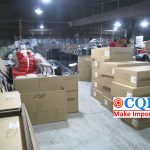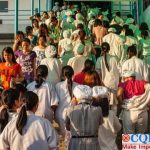Jeanswear process Inspection And Production Process
Jeanswear are made of denim, and are loved by consumers for their durability, leisure and durability. Although its overall style is relatively stylized, its detailed modeling and decoration are constantly deducing and changing with the passage of time. For the import and export trade, jeans are also one of the products with constant supply for a long time. Importers select suitable suppliers and select high-quality products through various channels and jeanswear process inspection. However, a good product not only depends on the support of the factory’s hardware equipment, but also requires the factory to have a good management system, so that all processes can be carried out in an orderly manner, and the jeanswear process inspection can be done on time before delivery, thus improving the economic benefits of all parties.

Jeanswear Process inspection And Production Process
Selection of raw materials – confirmation of size, color and accessories – sewing – washing – quality inspection – primary ironing – secondary ironing – labeling – finishing and packaging
1.Sewing process
The sewing of the product is carried out after a detailed plan has been worked out, including determining the size, color and accessories of each part. Sorting and bundling the garment pieces cut in the previous step, placing them on the designated station, and starting sewing by the designated workers. The type of sewing is also a kind of product design, including flat sewing, pinch sewing, inner wrapping sewing, outer wrapping sewing, etc.
- Water washing process
The old effect is the characteristic of the washing process. The washed clothes will be more comfortable and layered, and the stability of the fabric will also be improved. At the same time, the size of the product will be more stable by washing and shrinking in advance. Water washing methods can also be divided into many kinds: ordinary washing, stone washing, enzyme washing, chemical washing, etc. These different methods can make the product show various colors and textures, enhance the beauty of the product and thus increase the added value. In jeanswear process inspection, it occupies a large proportion to avoid products with rough hand feel and dim color after washing and circulating to the market.
3.Finishing and ironing process
In the process of sewing, wearing and washing, wrinkles, shrinkage and deformation will appear on jeans; ironing is the process of using different ironing tools to change the existing wrinkles under the action of external forces such as heating and pressing to make denim smooth. Ironing is an important link in the production of jeans, and it is also an indicator to judge the appearance in jeanswear process inspection. The ironing is generally divided into middle ironing and final ironing. The purpose is to deal with the defects in jeans in advance. At the same time, in order to avoid the defects remaining in the next working procedure, the importer certainly hopes that the factory can be strictly controlled and arranged Quick Factory Audit, to further understand the management system of the factory.
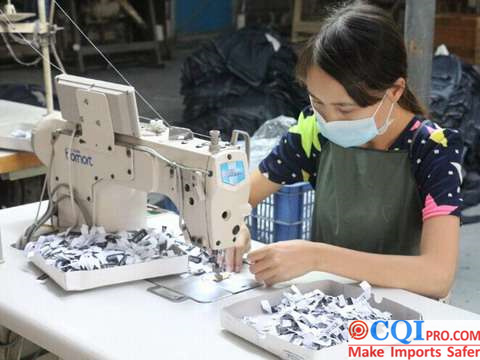

The impact of manufacturing technology on Jeanswear Process Inspection
1.Influence of sewing process
1 ) Jumpers and disconnection
Both of these defects will lead to weak sewing and easy loosening of the product. The main reasons for this are: the thickness of the needle does not match the thickness of the suture. The use time of the needle is too long; the needle slot is ground down and the installation position is incorrect; Pinholes have burrs; The spring force of pick-up wire is too large, etc.
2 ) Uneven stitch spacing
The stitch spacing is too tight or too thin, the stitches are not beautiful, and the appearance of the product is poor. The main reasons for this are: the thickness of the sewn object is not uniform and should be pushed and pulled properly; There is an obstacle in front of the sewn object. Loose needle distance adjustment button, etc.
3 ) Broken needle detect
Broken needle detect is a very important test in clothing products. Its existence directly affects human safety, so it is important to check whether broken needles are removed. The main reason for this is that the sewn object is thick and hard while the needle is too thin. The thickness of the quilt is uneven and the sewing speed is too fast. When sewing, push and pull the sewn object too hard, causing the needle to bend and break; The positions of the pressing casters and the needle plate holes are not equal.
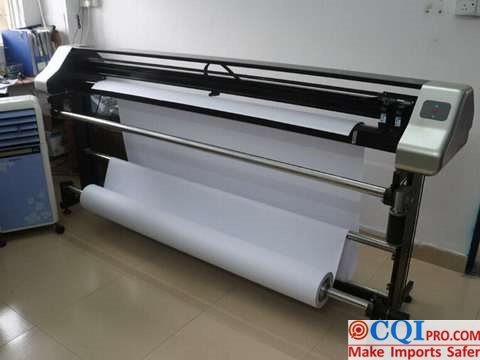
2.Influence of water washing process
1 ) Uneven fading
The uneven fading directly leads to the appearance defects of the products, which can not meet the customer’s requirements, thus reworking the whole batch of goods. The main reasons for this are: water pollution; Fading time is not correctly grasped; Different colors are mixed and washed, leading to pollution and noise.
2 ) Stain
These spots or patches not only affect the appearance of the product, but also the yarn of denim has been severely corroded and damaged and the fabric fastness has been greatly reduced. The main reasons for this are: the water quality is not clean; The washing times are less, resulting in detergent remaining on the product and further corrosion. Drying clothes for too long causes yellowing; During rinsing, the detergent is poured directly into the product without dilution, directly corroding the product and producing white spots.
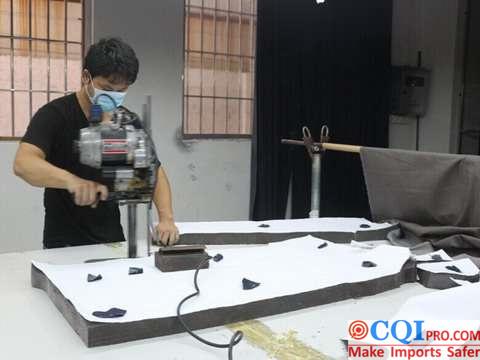
3.Influence of ironing process
1 ) Hot yellow
The appearance of jeans is affected. Once they turn yellow, the products cannot be shipped normally. The main reason for this is that the ironing temperature is too high, which can lead to yellowing and even carbonize and decompose.
2 ) uneven clothing
The product did not reach the effect of shaping, or there was the problem of folding and deformation. The main reasons for this are: lack of moisture and easy scorching; The pressure is too small for the fiber to be fixed. The cooling time is insufficient and the fiber molecules remain active.
3 ) spray, light, stains
The main cause: uneven ironing, resulting in water stains; The pressure is too much, resulting in leaving a glossy print on the product after ironing. The early stains were not cleaned up and were not noticed during ironing.
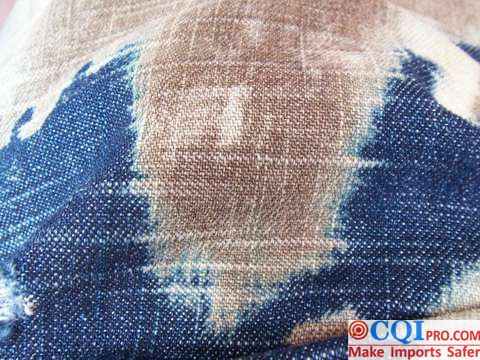
From the jeanswear process inspection, there are three key links: sewing, washing and ironing, each of which should be strictly controlled. The importer usually pays the most attention to product quality, followed by price. The quality conforms to the market positioning, and the jeans products that meet the consumer’s requirements are the most needed by the importer. This is not only for the manufacturer to be clear, but also for the importer’s purchasing department to be strictly enforced. CQI provides importers with a series of related services in About Us article lists in detail that importers can see at a glance.
CQI5 is committed to providing importers worldwide with product quality inspection services that far exceed those of our peers. If you are planning to import or have imported from China or Southeast Asian countries, please contact us cs’@’cqipro.com to learn more about how we can make your imports safer.
This article is an original article for CQI Inspection, who is committed to providing high-quality product inspection technology and know-how sharing for global importers and retailers to make imports safer.
All rights reserved. The contents of this website provided by CQI Inspection may not be reproduced or used without express permission.
For reprint, please contact with CQI Inspection, thank you.



